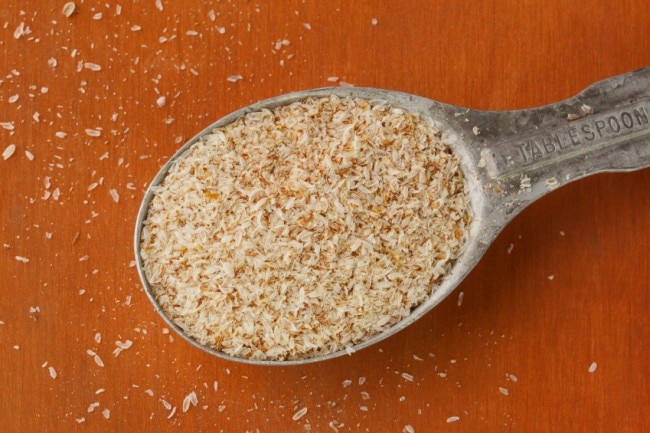Q: What is Psyllium?
A: Psyllium seed husks are part of the seeds of the plant Plantago ovata, which is native to India and Pakistan. Psyllium is primarily known for being an excellent source of soluble dietary fiber. The health benefits of psyllium fiber are far reaching, however, and may help to support heart health, gastrointestinal health and blood sugar. While the fiber found in psyllium is similar to that in oats and barley, it’s actually not wheat; thus, making it an excellent source of fiber for gluten-free dieters.
Q: Why is fiber so important and how much do I need?
A: Fiber’s main role is to help us produce solid, easy-to-pass stools and aid in the maintenance of a healthy gastrointestinal tract. The recommended daily amount of fiber is 38 grams for adult males and 25 grams for adult females. These amounts can be difficult to obtain, especially if your diet is not high in fruits, vegetables and whole grains.
The fiber from psyllium husks is soluble fiber, which is mucilaginous. This means that it attracts water and forms a gel-like substance that slows down digestion. Because of its slow-digesting properties, psyllium is known for having a filling effect similar to chia seeds, which may help to aid in dieting by reducing the size of meals and helping to cut down on snacking. Soluble fiber also helps to put the brakes on the digestion of sugars, resulting in a possibly positive impact on blood sugar levels. If you’ve read any oatmeal packaging in recent years, you may have noted soluble fiber’s role in helping to maintain healthy cholesterol numbers.* Just one more reason to consider psyllium.
Q: So, how do I take psyllium?
A: Psyllium fiber is available in multiple forms. You might like unrefined whole husks, but most people prefer ground psyllium husk powder or the capsule form for an easy addition to their dietary routine. Psyllium powder can simply be mixed with water (1 tablespoon per 8 ounces of water) and stirred or shaken. It can also be used in cooking and is becoming a staple source of fiber in meals for gluten-free eaters. Just one tablespoon of psyllium husks contains 4.5 grams of fiber.
Try this simple gluten-free pancake recipe, using the combination of psyllium husk and protein powders to substitute traditional flour:
Gluten-Free Protein Pancakes
Ingredients
2 Tbsp. psyllium husk powder
2 scoops gluten-free vanilla protein powder
2 whole eggs
1/2 cup almond milk or rice milk
Optional: drizzle agave syrup over pancakes
Directions
- Thoroughly mix all ingredients in large bowl.
- Grease cooking pan with coconut oil for added flavor and set stove top to medium heat.
- Pour batter onto hot pan and cook until bubbles appear. Flip and finish cooking until you’ve reached the desired consistency.
*These statements have not been evaluated by the FDA. These products are not intended to diagnose, treat, cure or prevent any disease.


